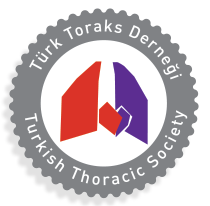Abstract
Objectives:
Measuring the amount of daily activity performed by patients with stroke is essential to understand the impact of their restrictions on the amount of activity in real life. The aim of the study is to determine the level of physical activity and its relationship with walking capacity.
Methods:
A total of 126 volunteer community-dwelling stroke patients were enrolled in this study. Physical activity level was evaluated by the short form of the International Physical Activity Questionnaire (IPAQ). Individuals whose score<600 MET-Min/week are described as low, between 600-3000 MET-Min/week are described as moderate active and >3000 MET-Min/week are described as high active. Walking capacity determined using the Six-Minute Walk Test (6-MWT). Perceived dyspnea level during physical activity was assessed by Modified Borg Scale (MBS).
Results:
A 61.9% of the participants were active smokers and 11.3% were ex-smokers. The duration of smoking was 17.9±8.8 packet/years. The mean score of MBS of the participants were 2.2±2.7. At the end of the research the energy consuming of the subjects is seen as 1224.45±2459.38 MET-min/week in average. It is also seen that 57.9% of the patients are low physically active, 31.7% of them are moderate and 10.4% of them are high activity level. Also there was a positive relationship between IPAQ scores 6-MWT (r=0.75; p=0.001) and MBS (r=0.34; p=0.043).
Conclusion:
It was revealed that a community-dwelling stroke patient wasn’t very active and it is associated with walking capacity. Clinicians should explore methods to increase physical activity and reduce sedentary behavior in stroke patients.



